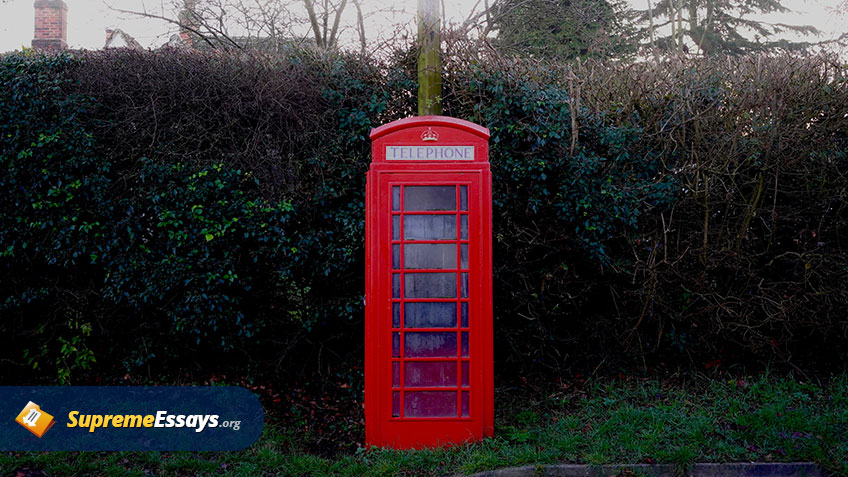
Everything You Should Know about Plagiarism

Communication has been the integral part of the culture of any society from the bygone era. With the flow of time, it has undergone numerous changes, which greatly affected not only communication within a single society yet also between people of different groups. Communication for great distances has its roots in the smoke signals and drum sounds to transfer messages. Nevertheless, due to the technological advancement, the means of communication evolved into letters, telegraphs, telephones, the Internet, and video calls.
The first telegraph was introduced in 1794 by Claude Chappe. The improvement to his invention was proposed by Samuel Morse almost half a century later – in 1836. The use of electric impulses was borrowed from another great inventor Charles Jackson, who offered to the public attention the electric impulse transportation through wires. The first telegraph connected two different places – Washington and Baltimore – over the Atlantic Ocean with the use of cable lines. Used for commercial purposes, it brought about the sustainable development of cable lines within the USA. The consequences are obvious: by the beginning of the 1870s, the USA had connected the global telecommunication networks.
It goes without saying that modern means of communications are rooted in the telegraph system. The first invention, which was based on this system, was the telephone. It strongly influenced the speed of transferring the message despite having the same electronic platform and cables. The focal point of the following advancement of telephone communication laid in the fact that underwater cables had signals, which were close to zero. This challenge gave a push to enhancing the cables themselves, namely using steel wrapped in copper, armor, and plastic shelter. This all led to the introduction of cable television and later cell phones. In the present day conditions, the cable system is out of date since the digital boxes, which do not require antenna amplifiers, have taken the front stage.
When Verizon Inc introduced to the public attention the fiber optics, which are able to convey the information at the rapid speed, no one could imagine the magnitude of this invention. In 1983, the versatility of applying the cell phones amazed each and every all over the globe. The possibility to send messages and e-mails, attach photos and videos, share the information on the web, and download everything you want could not be perceived else than a miracle. The ensuing advancements of the technologies, which introduced IPads, pocket e-books, and wireless Internet connection, enabled people to get and share information on the level of our planet. Instant messages and social networks are no wonder anymore, aren’t they?
Another critical technology that had a dramatic impact on the means of communications is radio. Experimenting with the electromagnetic waves that channeled the electricity, Heinrich Hertz invested great effort and much time to improve the radio system and its implementation. Later on, the radiotelephone came to existence with the possibility to transmit vocal speech, both speaking and listening.
What is more, the scanned photos and their storage in electronic format allowed to exchange and receive pictures despite great distances. The following investments of personal computers and random-access memory (RAM) made one of the biggest breakthroughs in the history of humanity. Such networks as Skype, Facebook, Twitter, What’s App, various e-mail boxes, and many others give the opportunity to send instant messages, share audio messages, and perform audio and video calling in the 21st century.
A lot has been said about the utmost importance of communication and its means in both ancient and modern eras. Despite the evolution and changes introduced by the great minds throughout the history of mankind, means of communication have not changed or even shifted the primary aim – to serve as a bridge for transferring information between human beings.
0
Preparing Orders
0
Active Writers
0%
Positive Feedback
0
Support Agents